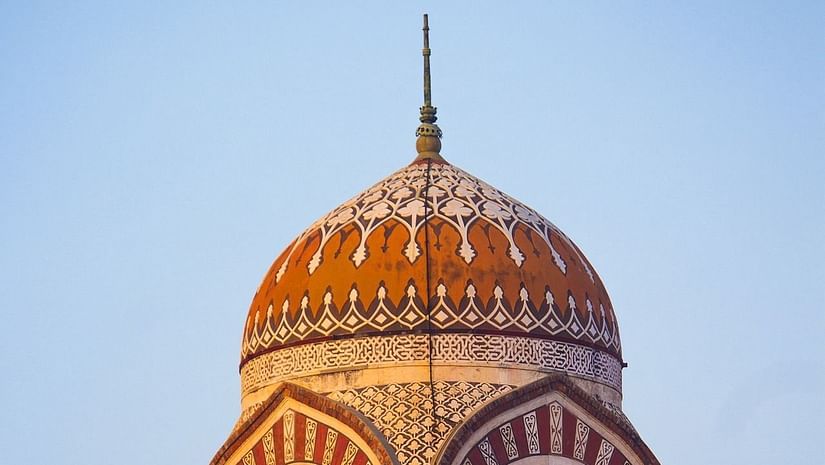- Weekend Trip in Chennai
- FIH Junior Hockey World Cup 2025, Chennai
- Chennai Handicrafts Guide: Explore the Famous Wooden & Traditional Crafts of the City
- Places to Visit near Marina Beach
- Restaurant in Chennai for Families & Food Lovers
- Trip to Chennai from Bangalore
- Kalaignar Centenary Park, Chennai
- Pongal Celebration in Chennai, Tamil Nadu
- Guindy Snake Park
- Adventure Sports in Chennai
- Water Sports in Chennai
- Tourist Places in Chennai
- Business Events in Chennai
- Best Time to Visit Chennai
- Offbeat Places in Chennai
- Nightlife in Chennai
- Architecture of Chennai
- Famous Churches in Chennai
- Best Street Shopping in Chennai
- Festivals of Chennai
- History of Chennai
- Textile in Chennai
- Top Industries in Chennai
- Hidden Gems in Chennai
- Chennai to Mahabalipuram
- World Cup Cricket Matches in Chennai 2023
- Famous Handicrafts of Chennai
- Pre-wedding Photoshoot Places in Chennai
- Chennai to Pondicherry Road Trip
- How to Pack for a Business Trip
- Best Museums in Chennai
- Old Madras - History of Chennai
- Temple Jewellery in Chennai
- The Magnificent Kapaleeshwarar Temple, Chennai
- Upcoming Conferences in Chennai
- Must-try Street Foods in Chennai
- Culture of Chennai
- An Exciting New Year Celebration in Chennai
- Madras Music Season
- Family Hotel In Chennai
- Chennai 2 Days Tour Itinerary
- Wedding Shopping in Chennai
- Medical Tourism in Chennai
- A Closer Look at the Old Temples of Chennai
- The Booming IT Sector in Chennai
- Beaches to Visit in Chennai
- Explore Marina Beach
- Tips for Business Travellers Visiting Chennai in Summer
There's a city in India where ancient temples brush shoulders with colonial landmarks, and Indo-Saracenic structures add a touch of exotic. Welcome to Chennai, a metropolis where history whispers from every brick and mortar. The city boasts a unique architectural tapestry, a testament to the city's rich past and its continuous evolution. So, put on your walking shoes and get ready to embark on a journey through time, exploring the architecture of Chennai.
Colonial Legacy of the British Raj
While wandering through the streets, you'll come across traces of colonial architecture in Chennai reflective of their past with British rule. Constructed between the 17th and 19th centuries, these edifices exhibit a fusion of European architectural styles such as Neoclassical and Gothic Revival. Among these, St. Mary's Church, erected in 1680, stands out as the oldest Anglican church in India, renowned for its exquisite stained-glass windows and Indo-Gothic architectural elements. Then there's the Fort St. George, a 17th-century marvel that once housed the Madras British administration. Today, it's a museum showcasing the city's colonial history. These colonial structures, once bastions of power, now serve as historical landmarks and museums, offering a glimpse into the city's colonial past.


Dravidian Grandeur
The essence of Chennai is embodied in its majestic Dravidian temples. These architectural wonders, distinguished by towering gopurams (entrance towers), intricate sculptures, and expansive courtyards, have served as places of worship and communal gatherings for generations. The Kapaleeshwarar Temple, constructed in the 7th century, exemplifies this tradition. Devoted to Lord Shiva, this temple complex comprises a maze of corridors adorned with sculptures narrating mythological tales.
Parthasarathy Temple is one of the most prominent architectural buildings in Chennai, featuring a pillared hall adorned with intricate carvings closely related to the epic of Mahabharata. You can spot a 9-foot-tall statue of Parthasarathy at the sanctum accompanied by other deities. These Dravidian temples are not just places of worship; they are testaments to the city's artistic heritage and cultural legacy. Even today, they serve as vibrant centres of faith, attracting devotees from all walks of life.
Indo-Saracenic Architecture in Chennai
The 18th and early 19th centuries saw the emergence of Indo-Saracenic architecture in Chennai, a unique blend of Indian, Islamic, and European influences. It represents a period of cultural exchange and artistic innovation. These buildings stand as testaments to the city's openness to diverse influences, shaping its architectural landscape. The University of Madras, established in 1857, is another architectural gem in this style, showcasing Indo-Islamic influences with its grand arches and courtyards.

Another example of Indo-Saracenic architecture is the Madras High Court, a magnificent structure that embodies the city's legal legacy. Its red-brick facade, adorned with intricate domes and minarets, is a photographer's delight. Chepauk Palace, built in the 18th century, which is also said to be the first building in Chennai to have been built in the Indo-Sarcenic Style of architecture is a magnificent example. It was the seat of the Tamil Nadu government until the late 20th century. Many colonial-era Indo-Saracenic buildings now house government offices or educational institutions.
Now that you're intrigued by the wonderful architecture of Chennai, you might be wondering where to stay. Look no further than Raj Park Hotel, Chennai, a perfect home base for your exploration. Located in the heart of the city, our hotel provides easy access to all the architectural marvels. Relax in spacious rooms, indulge in delicious food at the on-site restaurants, or take a refreshing dip in the pool. Just as wondrous and marvellous as the city makes you feel, we'll be just as comforting and special. Book your stay now, we await to welcome you!